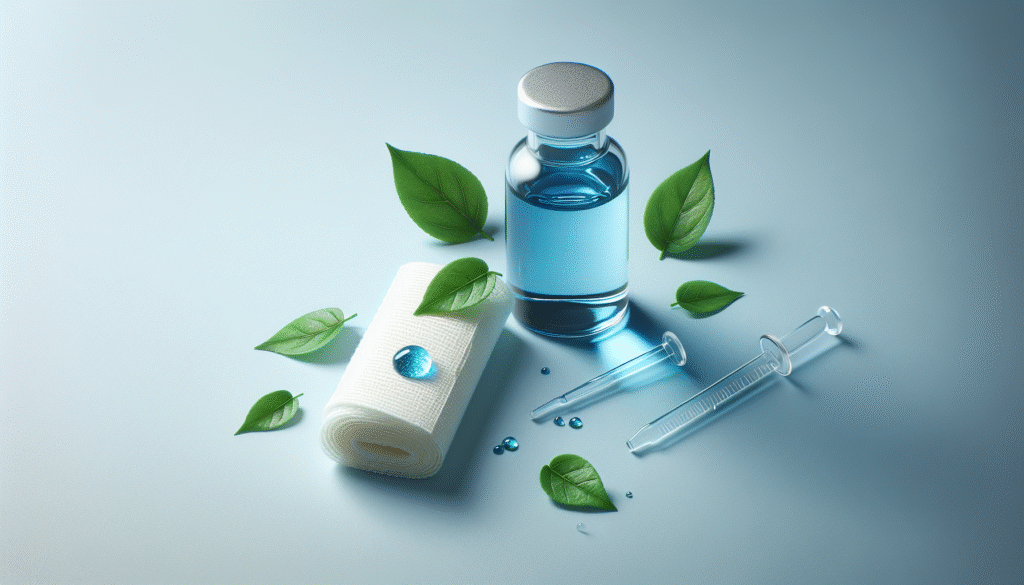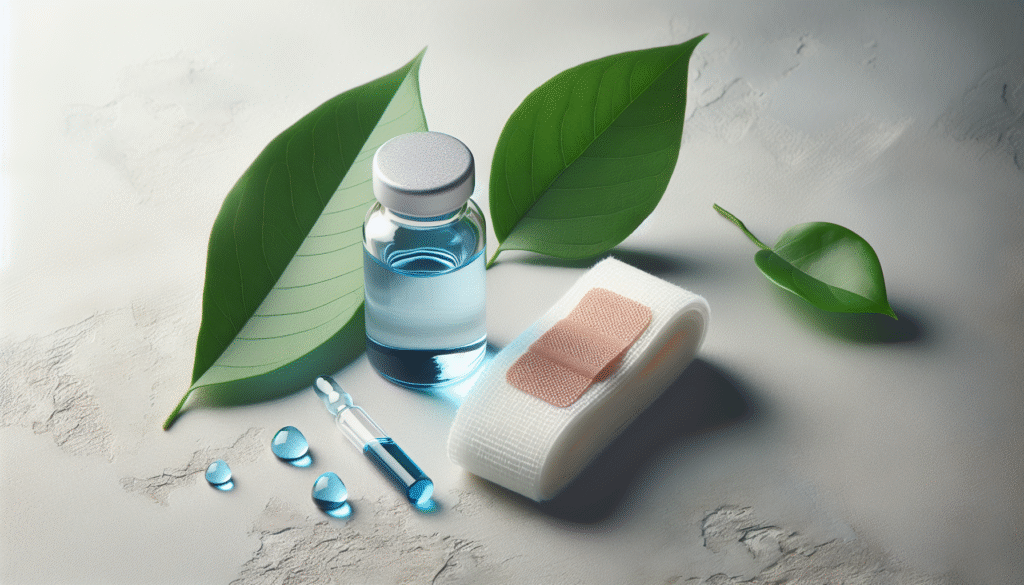
Can Methylene Blue Help With Skin Wounds?
Understanding Methylene Blue
Methylene Blue is a synthetic dye that has been utilized for more than a century in various medical applications. Originally developed as a textile dye, its unique properties led to its use as a medication, particularly in the treatment of methemoglobinemia, a condition where hemoglobin is unable to release oxygen effectively to body tissues. Over time, researchers began to explore its potential in other fields, including wound healing.
The Chemistry Behind Methylene Blue
At its core, Methylene Blue (MB) is a thiazine dye. When it comes into contact with biological tissues, it acts as a redox agent and has the ability to donate electrons. Its chemical structure allows it to penetrate cell membranes relatively easily, making it a candidate for various therapeutic applications.
The Historical Context
The use of Methylene Blue in medicine dates back to the late 19th century. Initially, it gained prominence in the treatment of malaria, following which it was adopted in diverse applications, spanning from bacteriology to the treatment of certain diseases. When it comes to skin disorders, the intriguing question remains: Can it aid in wound healing?
Mechanisms of Action in Wound Healing
Understanding the potential benefits of Methylene Blue in wound healing requires a look into its mechanisms of action.
Antioxidant Properties
One of the most significant properties of Methylene Blue is its role as an antioxidant. Oxidative stress is a prevalent factor in wound healing that can hinder the healing process. By neutralizing free radicals, Methylene Blue aids in creating a more favorable environment for tissue regeneration.
Anti-inflammatory Effects
Inflammation is a double-edged sword in wound healing. While it is a natural response to injury, excessive inflammation can impede healing. Methylene Blue has shown promise in modulating inflammatory responses, potentially leading to improved outcomes in skin wound management.
Antimicrobial Effects
In addition to its antioxidant and anti-inflammatory properties, Methylene Blue exhibits antimicrobial effects. In an era where antibiotic resistance poses significant challenges, its ability to combat various pathogens may offer a valuable alternative in treating infected wounds.
Promotion of Cellular Repair
Recent studies indicate that Methylene Blue can stimulate cellular proliferation and migration, both crucial for wound healing. By promoting fibroblast and endothelial cell activity, it can facilitate the formation of new tissue and blood vessels, significantly enhancing the reparative processes.

Application of Methylene Blue in Different Types of Wounds
Wounds come in various forms, each presenting unique challenges in terms of healing. Methylene Blue’s versatility can make it relevant across a spectrum of wound types.
Acute Wounds
Acute wounds result from a sudden injury, often characterized by clean edges and a well-defined healing process. Applications of Methylene Blue in surgical wounds and cuts may offer accelerated healing times due to its healing-promoting effects.
Chronic Wounds
Chronic wounds, such as diabetic ulcers and pressure sores, often resist healing. Methylene Blue’s ability to reduce oxidative stress and inflammation, coupled with its antimicrobial properties, may provide substantial benefits in treating these difficult cases.
Burns
Burns, depending on their severity, can be particularly challenging to heal. The antioxidant and anti-inflammatory properties of Methylene Blue may play a crucial role in the recovery from burn injuries, helping to reduce scarring and improve tissue regeneration.
Surgical Site Infections
The prevention and treatment of surgical site infections (SSIs) is an ongoing challenge in clinical settings. Methylene Blue’s antimicrobial properties may help in mitigating these risks, ensuring that post-operative wounds heal efficiently without complications.
Clinical Research on Methylene Blue and Wound Healing
Research is crucial in establishing whether Methylene Blue truly holds promise for wound healing. While there have been numerous studies, the results vary based on the application methods and wound types.
Recent Studies
-
Topical Application: Clinical trials have shown that topical applications of Methylene Blue can significantly enhance wound healing metrics in various chronic wound models.
-
Combination Treatments: Some studies combine Methylene Blue with other agents to enhance its efficacy, particularly in managing biofilm-forming bacteria.
-
Animal Models: Research using animal models has indicated improvements in healing times and wound closure rates when Methylene Blue is introduced into the treatment regimen.
Challenges in Research
Despite the promising findings, significant challenges remain in the clinical application of Methylene Blue. The variability in dosing, application methods, and concentration complicates the drawing of definitive conclusions. Furthermore, more extensive randomized controlled trials are necessary to provide the clinical community with robust evidence.

Practical Considerations
You might wonder how to utilize Methylene Blue in a practical setting. Here are some considerations:
Concentration and Preparation
The standard concentration for wound treatment typically ranges from 0.1% to 0.5%. Higher concentrations may not necessarily lead to better outcomes and can increase the risk of adverse reactions.
Modes of Delivery
Methylene Blue can be delivered through topical ointments, gels, or even as a solution for soaking wounds. The method chosen should consider the wound’s nature, location, and size.
Safety and Side Effects
Like any treatment, Methylene Blue is not without its potential side effects. Common side effects may include localized irritation at the application site. Rarely, systemic reactions can occur, particularly if high doses are used.
Regulatory Status of Methylene Blue
Before considering Methylene Blue for wound management, it is essential to understand its regulatory status in your region.
FDA Approval
In the United States, Methylene Blue is FDA-approved for the treatment of specific conditions but is not explicitly approved for wound healing. However, its use in this regard may be based on off-label consideration, emphasizing the need for healthcare providers to make informed decisions based on current research.
Clinical Guidelines
Consulting clinical guidelines and professional recommendations can provide insights into the best practices for using Methylene Blue in wound management. These guidelines often evolve as new evidence emerges, reinforcing the importance of staying updated.
Conclusion
The exploration of Methylene Blue as a potential aid for skin wound healing is an evolving field filled with promise. Its multifaceted mechanisms of action, including antioxidant, anti-inflammatory, and antimicrobial effects, suggest it could play a significant role in various wound types.
However, before embarking on a treatment journey with Methylene Blue, you should engage in informed discussions with healthcare professionals to weigh the benefits against possible risks.
As research continues to unfold, you may find that Methylene Blue becomes a more standard component of wound management strategies, providing a means to enhance healing outcomes in an increasingly complex healthcare landscape.